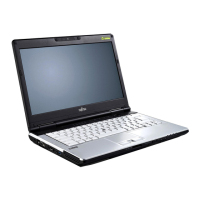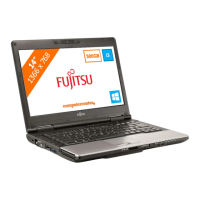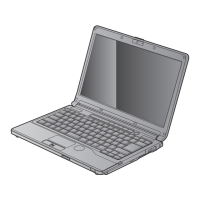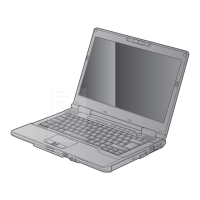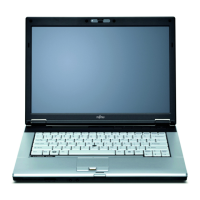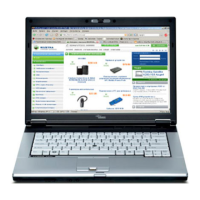16
- Locating the Controls and Connectors
HDMI Port (or DisplayPort)
The HDMI port (featuring NVidia graphics) is used to connect compatible digital devices with your computer (such as
a high-definition television or AV receiver). See “HDMI Port or DisplayPort” on page 78. Note that on certain
configurations of this LIFEBOOK, the HDMI port is replaced by a DisplayPort connector (featuring Intel HD graphics).
Microphone/Line-In Jack
The microphone/line-in jack allows you to connect an external mono microphone. See “Microphone/Line-In Jack” on
page 79.
Headphone/Line Out Jack
The headphone/line out jack allows you to connect headphones. See “Headphone/Line-Out Jack” on page 80.
USB 3.0 Port (or E-SATA/USB 3.0 Combo Port)
Note that on certain configurations of this LIFEBOOK, the USB 3.0 port is replaced by an E-SATA (External Serial
Advanced Technology Attachment)/USB 3.0 combo port. E-SATA is an external version of SATA, which connects your
computer to the hard drive. SATA is an interface that is much faster than typical IDE interfaces (E-SATA is six times
faster than USB 2.0). E-SATA is ideal for backing up large files on an external hard drive. This port can also be used as
a standard USB 3.0 port.
Air Vents
The air vents allow air to circulate through the system to cool down the components.
TO PROTECT YOUR NOTEBOOK FROM DAMAGE AND TO OPTIMIZE PERFORMANCE, BE SURE TO KEEP ALL AIR VENTS UNOBSTRUCTED, CLEAN, AND
CLEAR OF DEBRIS. THIS MAY REQUIRE PERIODIC CLEANING, DEPENDING UPON THE ENVIRONMENT IN WHICH THE SYSTEM IS USED.
D
O NOT OPERATE THE NOTEBOOK IN AREAS WHERE THE AIR VENTS CAN BE OBSTRUCTED, SUCH AS IN TIGHT ENCLOSURES OR ON SOFT SURFACES LIKE
A BED OR CUSHION.

